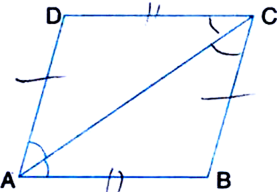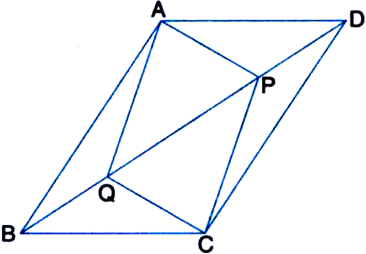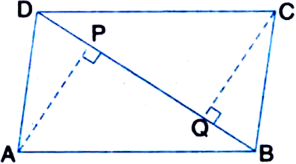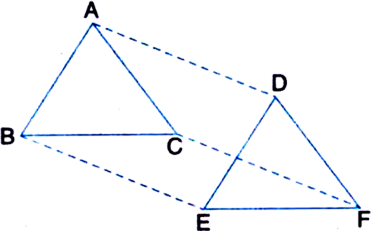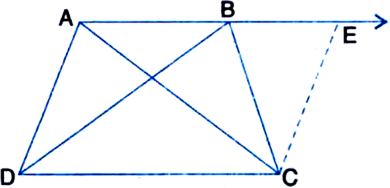ABCD is a quadrilateral in which P, Q, R and S are mid-points of the sides AB, BC, CD and DA (see figure). AC is a diagonal. Show that:
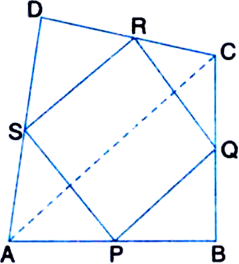

(ii) PQ = SR
(iii) PQRS is a parallelogram.
To Prove:
(ii) PQ = SR
(iii) PQRS is a parallelogram.
Proof : (i) In
| MId-point therorem
(ii) In
| Mid-point theorem
But from (i)
(iii) PQ || AC | From (ii)
SR || AC | From (i)
∴ PQ || SR
| Two lines parallel to the same line are parallel to each other
Also, PQ = SR | From (ii)
∴ PQRS is a parallelogram.
| A quadrilateral is a parallelogram if a pair of opposite sides are parallel and are of equal length




